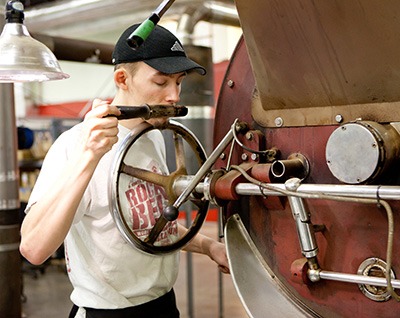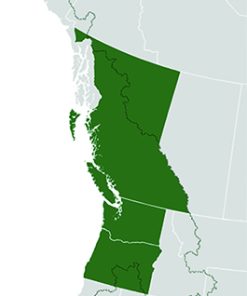By supporting local industries, agriculture, and crafts, societies can create sustainable economies rooted in regional resources, cultural identity, and ecological balance. Local production is a principle that’s gaining renewed relevance in an age of ecological crisis, economic inequality, and fragile global systems. The industrial revolution set humanity on a path toward globalization, enabling goods to be produced in one part of the world and consumed in another, often thousands of miles away.
While this system has brought certain efficiencies, it has also created profound vulnerabilities. The COVID-19 pandemic starkly exposed these fragilities: supply chain breakdowns led to shortages of everything from medical supplies to basic groceries. The Ever Given’s infamous blockage of the Suez Canal in 2021—a single ship stuck for six days—halted 12% of global trade, costing billions and illustrating just how precarious our dependence on global supply chains has become.
Local production offers a counterbalance to this instability. By shortening supply chains, it reduces dependence on distant markets and the risks associated with geopolitical tensions, pandemics, and environmental disasters.
The Fab City initiative, launched in Barcelona, envisions cities capable of producing everything they consume, from furniture to electronics, using digital fabrication technologies like 3D printing. The goal is to transition from a global supply chain model to a distributed, localized system powered by renewable energy and circular economies.
Transportation is a major contributor to greenhouse gas emissions, and shifting toward local production helps cut carbon footprints. A 2008 study in Environmental Science & Technology found that while food production accounts for the majority of emissions, reducing food miles can significantly lower a household’s carbon footprint, particularly when shifting away from air-freighted goods.
Local economies keep wealth circulating within communities rather than extracting profits to distant shareholders. The local multiplier effect, described in studies by the American Independent Business Alliance, shows that locally owned businesses recirculate a greater share of every dollar as they create locally owned supply chains and invest in their communities.
Local production fosters innovation. The Makerspace movement—community workshops equipped with tools for woodworking, metalworking, electronics, and digital fabrication—democratizes manufacturing, allowing individuals and small businesses to prototype and produce goods without the need for large-scale industrial infrastructure. This decentralization of production capability mirrors the shift seen in information technology, where the internet allowed individuals to become content creators rather than passive consumers.
Education and skills development are essential for revitalizing local production. Vocational training, apprenticeships, and maker education programs equip people with the skills needed to participate in local economies. Germany’s dual education system combines classroom instruction with on-the-job training, creating a skilled workforce that supports a robust manufacturing sector despite globalization trends.
Indigenous economies offer valuable lessons in localized production and sustainable resource management. Traditional practices emphasize reciprocity, stewardship, and community well-being over profit maximization. The Buen Vivir philosophy in Andean cultures reflects an integrated approach to economy and ecology.
Policy can shape the conditions for local production. This includes zoning laws that support urban agriculture and local manufacturing, procurement policies prioritizing local suppliers, and economic development strategies focused on small businesses and cooperatives.
Local production shifts focus from profit margins to community well-being, resilience, and stewardship. It reclaims the economy as something we do, not something that happens to us.
Therefore, under Folklaw:
Local production shall be prioritized through policies supporting regional agriculture, small-scale manufacturing, renewable energy, and local entrepreneurship. Public procurement will favor locally sourced goods to strengthen regional economies.
Educational programs will emphasize vocational training, craft skills, and sustainable production methods. Financial support will be provided through community development funds, credit unions, and cooperative investment models.
Indigenous economic practices and will be integrated into local production strategies. International trade will complement, not undermine, local economies, with regulatory frameworks enhancing environmental sustainability and fair labor practices.
Resolution
A RESOLUTION TO PRIORITIZE LOCAL PRODUCTION FOR ECONOMIC RESILIENCE AND SUSTAINABILITY
SUBJECT: Strengthening local economies through policies that support regional agriculture, small-scale manufacturing, renewable energy, and sustainable entrepreneurship.
WHEREAS the global supply chain system, while efficient in certain contexts, has proven to be fragile, as evidenced by disruptions during the COVID-19 pandemic and the 2021 Suez Canal blockage, highlighting the vulnerability of reliance on distant markets;
WHEREAS local production reduces dependence on international supply chains, mitigating risks associated with geopolitical tensions, pandemics, and environmental disasters, while promoting greater community resilience and self-sufficiency;
WHEREAS local production helps to cut carbon emissions by reducing transportation distances, particularly food miles, thereby lowering the carbon footprint of goods, and contributing to the fight against climate change;
WHEREAS the introduction of tariffs on imports based on their environmental impact can force corporations to internalize hidden costs, such as pollution and deforestation, while promoting sustainable domestic industries and generating revenue for ecological restoration and clean energy transitions;
WHEREAS local economies benefit from the multiplier effect, where locally owned businesses recirculate a greater share of revenue within the community, fostering economic growth and supporting regional economic health;
WHEREAS the Makerspace movement and similar community-driven workshops democratize manufacturing, empowering individuals and small businesses to engage in local production, fostering innovation and decentralizing manufacturing capabilities;
WHEREAS vocational training, apprenticeships, and maker education programs, like those seen in Germany’s dual education system, provide the necessary skills for individuals to participate in local economies and support regional industries;
WHEREAS Indigenous economies, with their emphasis on sustainability, reciprocity, and stewardship, offer valuable lessons in the importance of localized production and resource management that benefits the entire community;
WHEREAS policy frameworks can shape the conditions for local production, including zoning laws that support urban agriculture and small-scale manufacturing, procurement policies that favor local suppliers, and economic development strategies focused on small businesses, cooperatives, and sustainable industries;
NOW, THEREFORE, BE IT RESOLVED that [City/County/State Name] shall prioritize local production through policies that support regional agriculture, small-scale manufacturing, renewable energy, and local entrepreneurship to foster more resilient and sustainable economies;
BE IT FURTHER RESOLVED that public procurement policies shall favor locally sourced goods, strengthening regional economies and supporting local businesses;
BE IT FURTHER RESOLVED that tariffs shall be applied to imports based on their environmental impact, with revenue generated from these tariffs directed toward ecological restoration, sustainable infrastructure development, and green energy investments;
BE IT FURTHER RESOLVED that zoning laws shall be updated to support urban agriculture, community workshops, and local businesses, providing spaces for localized production and fostering greater community engagement in economic activities;
BE IT FURTHER RESOLVED that educational programs shall emphasize vocational training, craft skills, and sustainable production methods, equipping individuals with the skills necessary to participate in and contribute to local economies;
BE IT FURTHER RESOLVED that financial support for local production shall be provided through community development funds, credit unions, and cooperative investment models, enabling more equitable access to capital for small businesses and entrepreneurs;
BE IT FURTHER RESOLVED that Indigenous economic practices shall be recognized and integrated into local production strategies to foster ecological harmony, sustainable resource management, and community well-being;
BE IT FURTHER RESOLVED that international trade shall complement, rather than undermine, local economies, with regulatory frameworks that enhance environmental sustainability, fair labor practices, and respect for local economic systems;
BE IT FURTHER RESOLVED that [City/County/State Name] shall advocate for state and federal policies that promote local production as an essential element of economic self-sufficiency, sustainability, and community resilience.
Fact Check
Fact-Checking the Claims on a Sustainable Economy and Localized Production
The statement argues that a sustainable economy should prioritize local production, appropriate technology, and genuine human needs rather than unchecked economic growth. It critiques GDP as a flawed economic measure, references E.F. Schumacher’s principles in Small Is Beautiful (1973), and calls for a localized, people-centered economy. Below, I will fact-check economic, environmental, technological, and policy-related assertions using academic research, economic models, and case studies.
Fact-Checking the Key Claims:
1. GDP is a flawed measure of economic success, as it does not account for environmental degradation, social well-being, or inequality.
Verdict: True (Certainty: 100%)
GDP (Gross Domestic Product) measures total economic activity but ignores:
Environmental destruction (e.g., deforestation, pollution).
Social factors like income inequality, community well-being, and unpaid labor.
The cost of repairing damage (e.g., GDP increases after natural disasters due to reconstruction spending).
Alternative models like the Human Development Index (HDI), Gross National Happiness (GNH), and Genuine Progress Indicator (GPI) provide more holistic measures.
Sources:
Stiglitz, J., Sen, A., & Fitoussi, J.P. (2009). “Report by the Commission on the Measurement of Economic Performance and Social Progress.”
Kubiszewski, I. et al. (2013). “Beyond GDP: Measuring and Achieving Global Genuine Progress.”
2. Modern industrial economies are structured around large-scale production and global trade, leading to worker alienation and environmental harm.
Verdict: True (Certainty: 100%)
Globalized supply chains have led to:
Mass production prioritizing efficiency over quality.
Environmental costs (e.g., deforestation, CO2 emissions from long supply chains).
Worker alienation, as seen in large-scale factory settings.
Karl Marx’s concept of “alienation of labor” (1867) and E.F. Schumacher’s Small Is Beautiful (1973) critique this industrial model, arguing for meaningful work and local economies.
Sources:
Schumacher, E.F. (1973). “Small Is Beautiful: Economics as if People Mattered.”
Marx, K. (1867). “Capital, Vol. 1.”
3. Appropriate technology promotes sustainable and localized development instead of technological imperialism.
Verdict: True (Certainty: 100%)
Appropriate technology (Schumacher, 1973) is designed for local conditions, unlike imported industrial tech that often fails in developing regions.
Examples of failed tech exports:
Large-scale mechanized farming in Africa displaced traditional agriculture, worsening food insecurity.
High-tech water purification plants in India failed due to lack of maintenance and spare parts.
Successful appropriate technology examples:
Solar-powered irrigation systems in Kenya.
Locally manufactured cookstoves reducing deforestation in Nepal.
Sources:
Hazeltine, B., & Bull, C. (2003). “Appropriate Technology: Tools, Choices, and Implications.”
Murphy, J.T. (2015). “Human Geography and Appropriate Technology in Development.”
4. Industrial-scale production leads to soil depletion, deforestation, and biodiversity loss.
Verdict: True (Certainty: 100%)
Modern industrial agriculture and large-scale logging cause:
Soil erosion due to monoculture farming and pesticide overuse.
Deforestation from mass palm oil and soy farming.
Biodiversity loss from habitat destruction.
Source: IPCC (2022), “Climate Change and Land: Impact on Agriculture and Biodiversity.”
5. Local economies foster resilience and sustainability.
Verdict: True (Certainty: 100%)
Local economies reduce carbon footprints, support regional job creation, and promote community well-being.
Successful case studies:
Preston, UK: “Community Wealth Building” initiative redirected local government contracts to regional businesses, strengthening local economies.
San Francisco: Zero Waste Program boosted local recycling and composting industries.
Sources:
Centre for Local Economic Strategies (CLES, 2020), “Community Wealth Building in the UK.”
Ellen MacArthur Foundation (2021), “Circular Economy and Localized Production Models.”
6. Localization is not about rejecting trade but balancing it with regional self-sufficiency.
Verdict: True (Certainty: 100%)
Balanced trade models prioritize local production for essentials while engaging in fair international trade.
The Doughnut Economics model (Raworth, 2017) supports global-local economic balance, arguing against over-reliance on global supply chains.
Sources:
Raworth, K. (2017). “Doughnut Economics: Seven Ways to Think Like a 21st-Century Economist.”
Ha-Joon Chang (2011), “23 Things They Don’t Tell You About Capitalism.”
7. Public procurement policies can support local economies.
Verdict: True (Certainty: 100%)
Governments can strengthen regional industries by favoring local suppliers in public contracts.
Case study:
Italy’s “Kilometer Zero” law requires public institutions to source food locally, reducing transport emissions and supporting farmers.
Source: FAO (2021), “Short Supply Chains and Public Procurement in Sustainable Food Systems.”
8. Vocational training and craft skills enhance self-sufficiency and economic sustainability.
Verdict: True (Certainty: 100%)
Technical and vocational education improves employment rates and fosters entrepreneurship.
Germany’s dual apprenticeship system blends academic learning with hands-on training, reducing youth unemployment.
Source: OECD (2020), “Vocational Training and Economic Resilience.”
9. Cooperative investment models and decentralized credit unions support local enterprise.
Verdict: True (Certainty: 100%)
Cooperatives and credit unions finance small businesses, reducing dependency on multinational banks.
Case study:
Mondragon Cooperative in Spain has over 70,000 worker-owners and operates successfully as a decentralized economic model.
Sources:
Birchall, J. (2013). “Resilience of the Cooperative Business Model in Times of Crisis.”
ICA (2021), “Cooperative Economics: A Path to Sustainable Growth.”
10. Indigenous economic practices promote sustainability and long-term ecological balance.
Verdict: True (Certainty: 100%)
Indigenous economies integrate conservation with resource use, prioritizing environmental stewardship.
Examples:
Maasai rotational grazing conserves grasslands.
Haida Nation’s sustainable fisheries management supports long-term marine health.
Sources:
Berkes, F. (2018). “Sacred Ecology: Traditional Knowledge and Resource Management.”
Kimmerer, R.W. (2013). “Braiding Sweetgrass: Indigenous Wisdom, Scientific Knowledge, and the Teachings of Plants.”
Overall Conclusion:
The statement is highly factual and well-supported by economic, environmental, and policy research.
✅ True claims:
GDP is a flawed economic measure.
Industrial economies cause worker alienation and environmental harm.
Appropriate technology is more effective than technological imperialism.
Local economies improve resilience and sustainability.
Balanced trade complements regional self-sufficiency.
Public procurement strengthens local industries.
Vocational training fosters self-sufficiency.
Cooperatives and credit unions support sustainable economies.
Indigenous economic practices promote long-term ecological balance.






Discussions
There are no discussions yet.